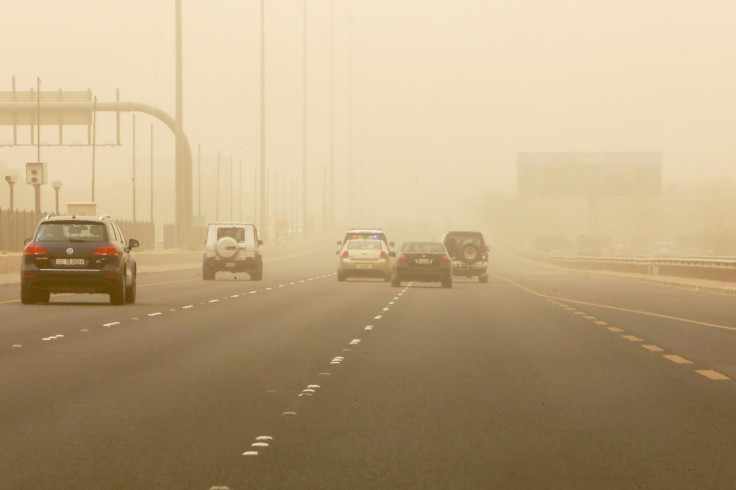Sahara Desert Dust To Hit Florida, May Cause COVID-19-Like Symptoms
KEY POINTS
- People exposed to the Saharan dust may experience respiratory problems with symptoms similar to that of COVID-19, experts say
- The distinct difference between allergies and COVID-19 is fever
- Experts recommended wearing face masks and staying at home to lower the risk of exposure to dust
As winds carry dust from the Sahara desert to Florida, people may encounter trouble trying to tell allergies and COVID-19 apart by their symptoms when the cloud of dust arrives this Wednesday.
For some, the Saharan dust brings about beautiful sunsets and orange hazy skies. For others, however, the yearly dust means a lot of sneezes and respiratory problems. According to experts, symptoms of the respiratory issues it causes could mimic those of COVID-19, Fox 35 Orlando reported.
Richard Broyles of the Baptist Health System said that one way to find out if the symptoms are caused by something else is to check if fever is present.
"Many of the symptoms are similar such as coughing, wheezing, chest congestion, and flu-like body aches. But one sign it’s not just allergies is fever," Broyles said. "Allergies don’t cause fever, but COVID-19 can because it is a virus. So monitor your temperature and seek care if your temperature rises."
He added that those exposed to the dust may experience chest tightness and increased coughing.

Dr. Herman Gaztambide, a pulmonologist with Orlando Health, echoed Broyles’ statement.
“When you have COVID-19 infection, it’s an active infection, so you are expected to have a fever with it which is very different than allergies which would give you almost every other symptom, but allergies can never give you fever," WESH quoted the doctor as saying.
Other symptoms that could signal a COVID-19 infection include headache, diarrhea, sore throat, loss of taste or smell and nausea.
Exposure to the Saharan dust may worsen the damage left by COVID-19 in the lungs of survivors, according to Gaztambide, so it is best to take precautions as soon as the dust arrives in Florida Wednesday.
"Those patients are dragging with them some level of damage to their lungs and this dust storm could very well exacerbate their symptoms," he said.
To help avoid respiratory problems, experts recommend the following:
- Wear a face mask to avoid inhaling the dust in the air
- For those with asthma, use an inhaler when experiencing trouble breathing
- Take over-the-counter or prescription allergy medications
- Generally, avoid heading outside to lower the risk of exposure to dust and other irritants
Last summer, winds carried nearly 24 tons of dust from the Sahara desert. The 2020 dust storm, nicknamed Godzilla, was so huge that astronauts were able to see it from outer space.
WOW! A plume of dust seen from space on satellite today coming from the Sahara Desert in North Africa. It's moving over the Atlantic Ocean and may bring some hazy sunrise and sunsets to parts of the United States this week. #Space #SaharanDust pic.twitter.com/J7ezuMuCkR
— Mark Tarello (@mark_tarello) June 24, 2020
© Copyright IBTimes 2025. All rights reserved.





















